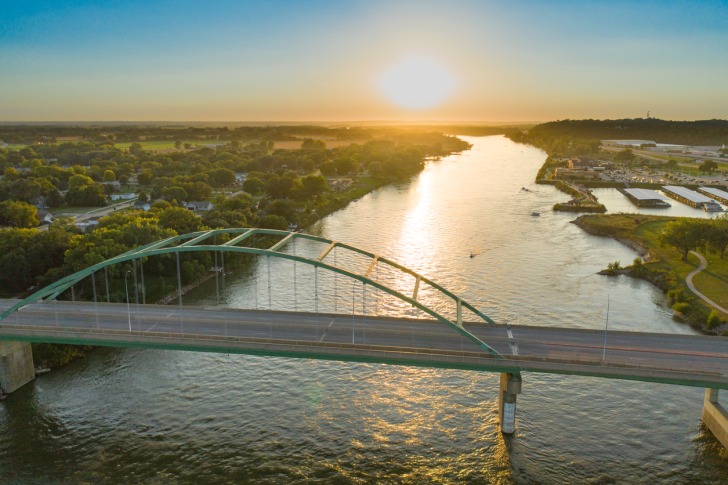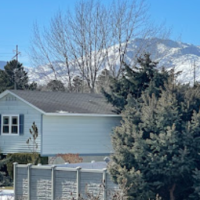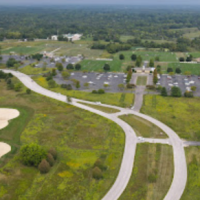Sioux City is literally in the northwest corner of Iowa, bordering South Dakota to its north, and Nebraska across the Missouri River.
It is relatively remote, and like a lot of Iowa towns, has a lower cost of living and a high quality of life.
There is more crime here than most of Iowa however, and that is one downside.
Job growth has also slowed, and the population has not grown much in recent years.
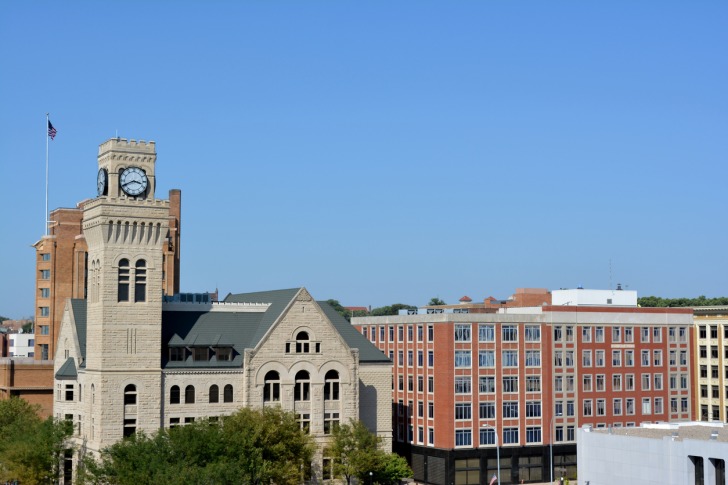
Contents
Pros of Living in Sioux City
1. Cost of Housing
The average home in Iowa costs a little more than $212,000, which is far below the national average.
The average home sells for $215,000 in Sioux City.
The average rent is $926, compared to the state average of $824.
That is a little higher than the state average, but not as high as the national average.
Iowa is one of the cheapest states as far as housing goes, and Sioux City follows that trend.
2. Cost of Living
Housing is just the beginning of lower-cost living in Sioux City.
The entire state has a reputation for low-cost living expenses.
Sioux City may be a little higher than the state average in a few categories, but it is still below the national average in almost all categories.
The cost of living includes food, clothing, transportation, and utilities, in addition to housing.
The cost of living is about $32,000 in Sioux City, $33,000 in Iowa, and $38,000 nationally.
3. Plentiful Jobs
There are a lot of jobs available in Sioux City, especially in the food industry with Tyson Foods and Seaboard Foods being the major employers.
Schools and healthcare also have a lot of jobs and are growing.
There are jobs available in many industries in Sioux City, making it a good place to look for a job.
Total employment in the Sioux City area is expected to grow steadily in the coming years.
4. Lots of Cultural Activities
It may be a little surprising in a town that does not have a major university, but Sioux City has a strong arts and cultural scene.
There are several museums for the arts, and there are plenty of performances to enjoy throughout the year.
The city is famous for its public art as well, with a lot of sculptures in parks, and murals spread throughout the city.
5. Plentiful Outdoor Activities
The Missouri River running through the town provides a lot of natural beauty and recreational opportunities.
Boating, skiing, and fishing are popular activities along the river.
There are plentiful trails in the city, and in the general area, for the hiker, runner, or bicyclist.
Winters are harsh, but even then, there is ice fishing, skating, and skiing to enjoy.
6. Education
While Sioux City does not have a major state college, it does have smaller colleges and junior colleges, that are highly rated.
Public Schools perform at about the state level, which is good if not excellent.
Children can get a good education here, and some solid college as well.
Adults can get continuing education courses through junior colleges.
7. Friendly City
Sioux City has a reputation for being a friendly city.
Most of the Midwest does, and Sioux City is perhaps a bit above average in that area. People seem open to new people, and you may find yourself welcomed easily if you move there.
There are a lot of festivals and other public events where you can fit in and get to know people.
It is also a city where you can get involved rather easily even as a newcomer.
8. Natural Beauty
The Missouri River offers a lot of scenic views and some outstanding sunsets.
There are also many river buffs that add to the scenic beauty.
The Loess Hills are a group of hills that surround the area, giving roads a lot of ups and downs.
The Missouri River has been declared a national recreation site, which is land around the river that can be enjoyed.
There are a lot of small neighborhoods that have a unique appearance due to the bluffs as well.
Cons of Living in Sioux City
1. Harsh Winters
The area is pleasing until winter arrives.
Then it is cold for several months, and there is often a lot of snow.
There may be more than a month-long period with the temperature not getting above freezing.
This area gets the most snowfall of anywhere in the state.
The heavy snow also creates hazardous road conditions that are difficult even for natives to contend with.
There are also lots of gray days with no sunshine even when there is no snow.
2. Extreme Weather
In addition to harsh winters, Sioux City is in an area that can experience a lot of weather extremes.
Summers are not all that hot, but you can get tornadoes during the early summer, and some have been very destructive.
The Missouri River floods on occasion, and while safeguards are in place, flooding is still a danger in this area.
Add that to the heavy snowfall in winter, and you can experience a lot of extremes during a year in Sioux City.
3. Not Much Diversity
The city, and area, are predominantly white.
A lot of early settlers were German, and that influence can still be seen.
What cannot be seen is the influence of other cultures.
Perhaps because of this, there are not a lot of different cultural cuisines available.
You won’t get to experience many cultures here, though there are some exceptions.
It is not that the population is intolerant, it’s just that there is not much representation.
4. Entertainment
Sioux City does have its share of music and artistic type performances, but they are not as plentiful as they are in some other areas of the state.
There does not seem to be a thriving nightlife, for example, so some people may find it boring.
Shopping and dining options are also rather limited for a city of this size.
There are interesting things to explore and see in Sioux City, but it does not take a long time to see them all.
5. High Crime Rate
Sioux City has one of the highest crime rates in the state, regardless of the size of the city.
The crime rate is 50 percent higher than the national average, which is much higher than the rest of the state.
Sioux City has 5.57 violent crimes per 1,000 people.
The national average is 4.1 and the state average is 3.9.
Property crime has similar percentages, which are higher than the state and national average.
Assault is the most common violent crime.
Theft and burglary are the most common property crimes.
There are some safe areas, but overall there is a lot of crime.
6. Fairly Remote
This could be a positive to some people, but it is a long way to a big city.
It can feel isolated, especially with miles of farmland in all directions from the city.
It has a small-town feel, and that is not always positive.
It has a reputation for not changing much, which is common in a town that is not close to other cities.
Being close to two other states does not make a lot of difference since they are very similar to Iowa.
7. Lots of Poor People
The city has a poverty level of 14 percent, which is above the national average of 11.1 percent.
There are a lot of jobs, but they are factory jobs that do not pay particularly well.
People living in poverty may have jobs.
Wages have been stagnant for a few years, which has not helped.
While the cost of living is low, income also seems to be low in this area, below both the state and national averages.
8. Poor Reputation
Sioux City does not have the glowing reputation that many Iowa cities have.
There is a high crime rate in most of the town.
Even the bustling downtown is not entirely safe.
This could be a positive in keeping housing costs low, but it retains a negative reputation for not being a forward-progressive city.
Other than the Missouri River, there are not a lot of attractions, and that may hinder its reputation as well.
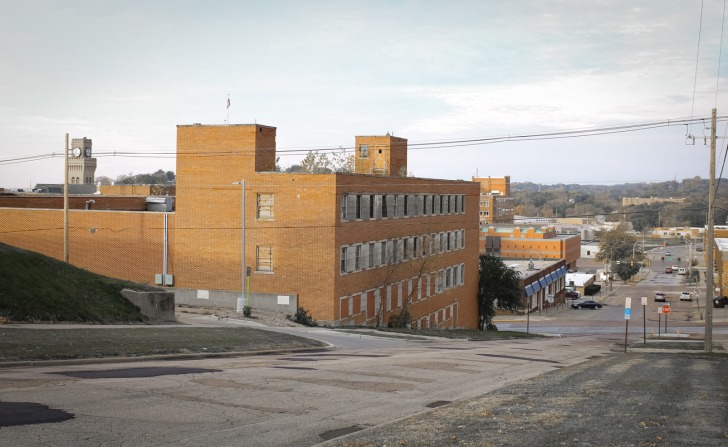
Pros and Cons of Living in Sioux City, IA – Summary Table
| Pros of Living in Sioux City | Cons of Living in Sioux City |
|---|---|
| 1. Cost of Housing | 1. Harsh Winters |
| 2. Cost of Living | 2. Extreme Weather |
| 3. Plentiful Jobs | 3. Not Much Diversity |
| 4. Lots of Cultural Activities | 4. Entertainment |
| 5. Plentiful Outdoor Activities | 5. High Crime Rate |
| 6. Education | 6. Fairly Remote |
| 7. Friendly City | 7. Lots of Poor People |
| 8. Natural Beauty | 8. Poor Reputation |
Sioux City Safety Overview
READ THE FULL REPORT: Sioux City Safety Review
Safety Index:- OVERALL RISK: MEDIUM
- TRANSPORT & TAXIS RISK: LOW
- PICKPOCKETS RISK: MEDIUM
- NATURAL DISASTERS RISK: MEDIUM
- MUGGING RISK: MEDIUM
- TERRORISM RISK: LOW
- SCAMS RISK: LOW
- WOMEN TRAVELERS RISK: MEDIUM
Frequently Asked Questions
When was Sioux City founded?
Iowa City was started as a settlement on the Missouri River in 1854 and was incorporated in 1857.
It became a transportation hub, especially for Mormons headed west, and speculators headed for the Wyoming goldfields.
It was a natural spot for a settlement along the Missouri River that was heavily used for transportation.
It was first mapped and described by the Lewis and Clark expedition in 1804.
Is Sioux City a good place to live?
Whether it is good or not is subjective, but the positives outweigh the negatives for a lot of people.
It has a low cost of living, even if wages are not high.
It has enough culture to be fun, and pleasant enough most of the year.
If you can stand the harsh winters, and the crime rate, it could be a very nice place to live.
Other Iowa Cities of similar size may have higher ratings, however.
How dangerous is it to visit Sioux City?
There is a high crime rate, so there is a medium risk for travel in Sioux City.
Locals have the advantage of knowing where the safe areas are.
It is perhaps more dangerous than other Iowa Cities, but it is far less dangerous than major American cities like New York or Los Angeles.
With only sensible precautions you should be safe visiting Sioux City,
What contributes to Sioux City's reputation?
Sioux City has a lot going for it, but it has a downside that makes it have lower rates than other Iowa cities.
It has a poverty rate of 13 percent, which is above the national average.
While expenses are low, wages are also low, and there are a lot of poor people in the city.
The worst thing perhaps, is the high crime rating, which is far above the state average, and higher than the national average.
Most cities in Iowa are far below the national average.
How did Sioux City get its name?
It is named for the Sioux Indians, who called this area home before Europeans came in and pushed them out.
There were also Yankton Indians here, and that is closely related to and may be considered, part of the overall Sioux Nation.
The Sioux River was also part of the reason it got its name.
This smaller river flows into the Missouri near where Sioux City is located today.
